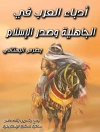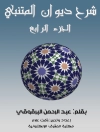Medieval English Drama provides a fresh introduction to the
dramatic and festive practices of England in the late Middle Ages.
The book places particular emphasis on the importance of the
performance contexts of these events, bringing to life a period
before permanent theatre buildings when performances took place in
a wide variety of locations and had to fight to attract and
maintain the attention of an audience. Showing the interplay
between dramatic and everyday life, the book covers performances in
convents, churches, parishes, street processions and parades, and
in particular distinguishes between modes of outdoor and indoor
performance.
Katie Normington aids the reader to a fuller understanding of
these early English dramatic practices by explaining the
significance of the place of performance, the particularities of
spectatorship for each event and how the conventions of the form of
drama were manipulated to address its reception. Audiences
considered range from cloistered members, congregations and parish
members to urban citizens, nobles and royalty.
Undergraduate students of literature of this period will find
this an approachable and illuminating guide.
สารบัญ
Acknowledgements.
Preface.
List of Abbreviations.
Introduction.
1. Drama of Enclosure: Convent Drama.
2. Drama of Inclusion: Church and Parish.
3. Drama and the City: City Parades.
4. Drama in the City: Processional Drama and Hybridity.
5. Fixed Place Drama: Place-and-Scaffold.
6. Indoor Drama: Private Entertainment.
Conclusion.
Notes.
Bibliography.
Index
เกี่ยวกับผู้แต่ง
Katie Normington, Lecturer in Drama, Royal Holloway, University of London,












